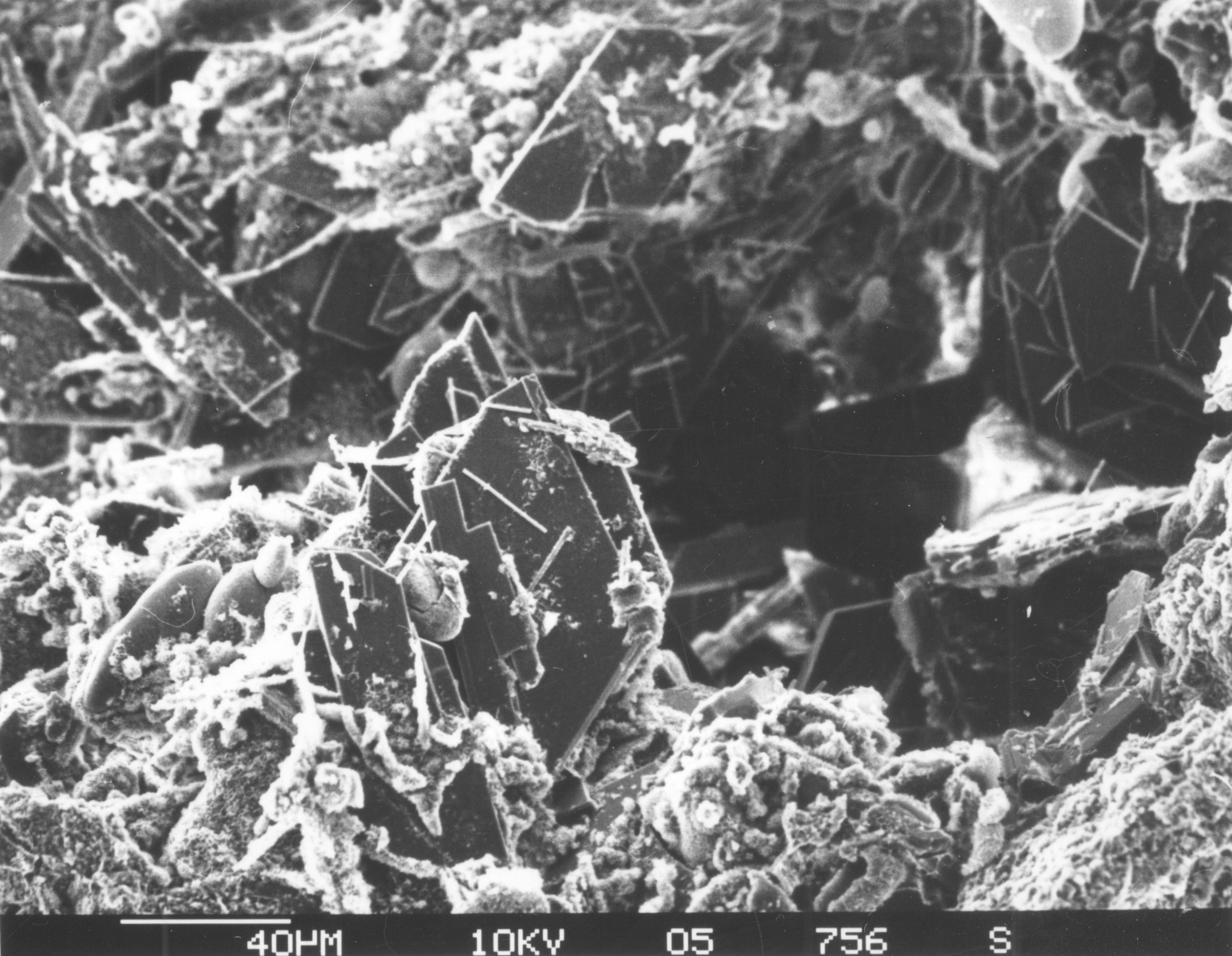Authigenic on:
[Wikipedia]
[Google]
[Amazon]
 Authigenesis is the process whereby a
Authigenesis is the process whereby a
 * calcium carbonate
* apatite
*
* calcium carbonate
* apatite
*
Authigenic sediments
Sedimentology Mineralogy {{Geology-stub
 Authigenesis is the process whereby a
Authigenesis is the process whereby a mineral
In geology and mineralogy, a mineral or mineral species is, broadly speaking, a solid chemical compound with a fairly well-defined chemical composition and a specific crystal structure that occurs naturally in pure form.John P. Rafferty, ed. (2 ...
or sedimentary rock
Sedimentary rocks are types of rock that are formed by the accumulation or deposition of mineral or organic particles at Earth's surface, followed by cementation. Sedimentation is the collective name for processes that cause these particles ...
deposit is generated where it is found or observed. Such deposits are described as authigenic. Authigenic sedimentary minerals
In geology and mineralogy, a mineral or mineral species is, broadly speaking, a solid chemical compound with a fairly well-defined chemical composition and a specific crystal structure that occurs naturally in pure form.John P. Rafferty, ed ...
form during sedimentation
Sedimentation is the deposition of sediments. It takes place when particles in suspension settle out of the fluid in which they are entrained and come to rest against a barrier. This is due to their motion through the fluid in response to the ...
by precipitation
In meteorology, precipitation is any product of the condensation of atmospheric water vapor that falls under gravitational pull from clouds. The main forms of precipitation include drizzle, rain, sleet, snow, ice pellets, graupel and hail. ...
or recrystallization instead of being transported from elsewhere (allogenic) by water or wind. Authigenic sediments are the main constituents of deep sea sedimentation. Authigenic clays
Clay is a type of fine-grained natural soil material containing clay minerals (hydrous aluminium phyllosilicates, e.g. kaolin, Al2 Si2 O5( OH)4).
Clays develop plasticity when wet, due to a molecular film of water surrounding the clay par ...
tend to reduce the porosity
Porosity or void fraction is a measure of the void (i.e. "empty") spaces in a material, and is a fraction of the volume of voids over the total volume, between 0 and 1, or as a percentage between 0% and 100%. Strictly speaking, some tests measur ...
of sediments, thus reducing permeability.
In metamorphic petrology an authigenic mineral is one formed ''in situ
''In situ'' (; often not italicized in English) is a Latin phrase that translates literally to "on site" or "in position." It can mean "locally", "on site", "on the premises", or "in place" to describe where an event takes place and is used in ...
'' during metamorphism
Metamorphism is the transformation of existing rock (the protolith) to rock with a different mineral composition or texture. Metamorphism takes place at temperatures in excess of , and often also at elevated pressure or in the presence of ch ...
, again by precipitation from fluids or recrystallization.
For any mineral to be precipitated, the water must be supersaturated with respect to that mineral. For calcite, this means that the area of deposition must be above the carbonate compensation depth, or that the pore waters are sufficiently saturated due to dissolution of other grains that precipitation can begin. The alkalinity
Alkalinity (from ar, القلوي, al-qaly, lit=ashes of the saltwort) is the capacity of water to resist acidification. It should not be confused with basicity, which is an absolute measurement on the pH scale.
Alkalinity is the strength ...
can also be reduced by microbial sulphate
The sulfate or sulphate ion is a polyatomic anion with the empirical formula . Salts, acid derivatives, and peroxides of sulfate are widely used in industry. Sulfates occur widely in everyday life. Sulfates are salts of sulfuric acid and many ar ...
reduction.SCOTT RITGER, BOBB CARSON and ERWIN SUESS, 1987. Methane-derived authigenic carbonates formed by subduction-induced pore-water expulsion along the Oregon/Washington margin. Geol. Soc.Am. Bull.; 98; 147-156
Common authigenic minerals in sedimentary rocks
 * calcium carbonate
* apatite
*
* calcium carbonate
* apatite
*clays
Clay is a type of fine-grained natural soil material containing clay minerals (hydrous aluminium phyllosilicates, e.g. kaolin, Al2 Si2 O5( OH)4).
Clays develop plasticity when wet, due to a molecular film of water surrounding the clay par ...
M. D. Wilson and E. D. Pittman, 1977. Authigenic clays in sandstones; recognition and influence on reservoir properties and paleoenvironmental analysis. J. Sed. Res.; 47; 3-31.
* hematite
* limonite
*chamosite
Chamosite is the Fe2+end member of the chlorite group. A hydrous aluminium silicate of iron, which is produced in an environment of low to moderate grade of metamorphosed iron deposits, as gray or black crystals in oolitic iron ore. Like other ...
*siderite
Siderite is a mineral composed of iron(II) carbonate (FeCO3). It takes its name from the Greek word σίδηρος ''sideros,'' "iron". It is a valuable iron mineral, since it is 48% iron and contains no sulfur or phosphorus. Zinc, magnesium and ...
*silica
Silicon dioxide, also known as silica, is an oxide of silicon with the chemical formula , most commonly found in nature as quartz and in various living organisms. In many parts of the world, silica is the major constituent of sand. Silica is ...
*glauconite
Glauconite is an iron potassium phyllosilicate ( mica group) mineral of characteristic green color which is very friable and has very low weathering resistance.
It crystallizes with a monoclinic geometry. Its name is derived from the Gre ...
*pyrite
The mineral pyrite (), or iron pyrite, also known as fool's gold, is an iron sulfide with the chemical formula Fe S2 (iron (II) disulfide). Pyrite is the most abundant sulfide mineral.
Pyrite's metallic luster and pale brass-yellow hue giv ...
See also
*Neomorphism
Neomorphism refers to the wet metamorphic process in which diagenetic alterations systematically transform minerals into either polymorphs or crystalline structures that are structurally identical to the rock(s) from which they developed.
Coined ...
References
External links
Authigenic sediments
Sedimentology Mineralogy {{Geology-stub